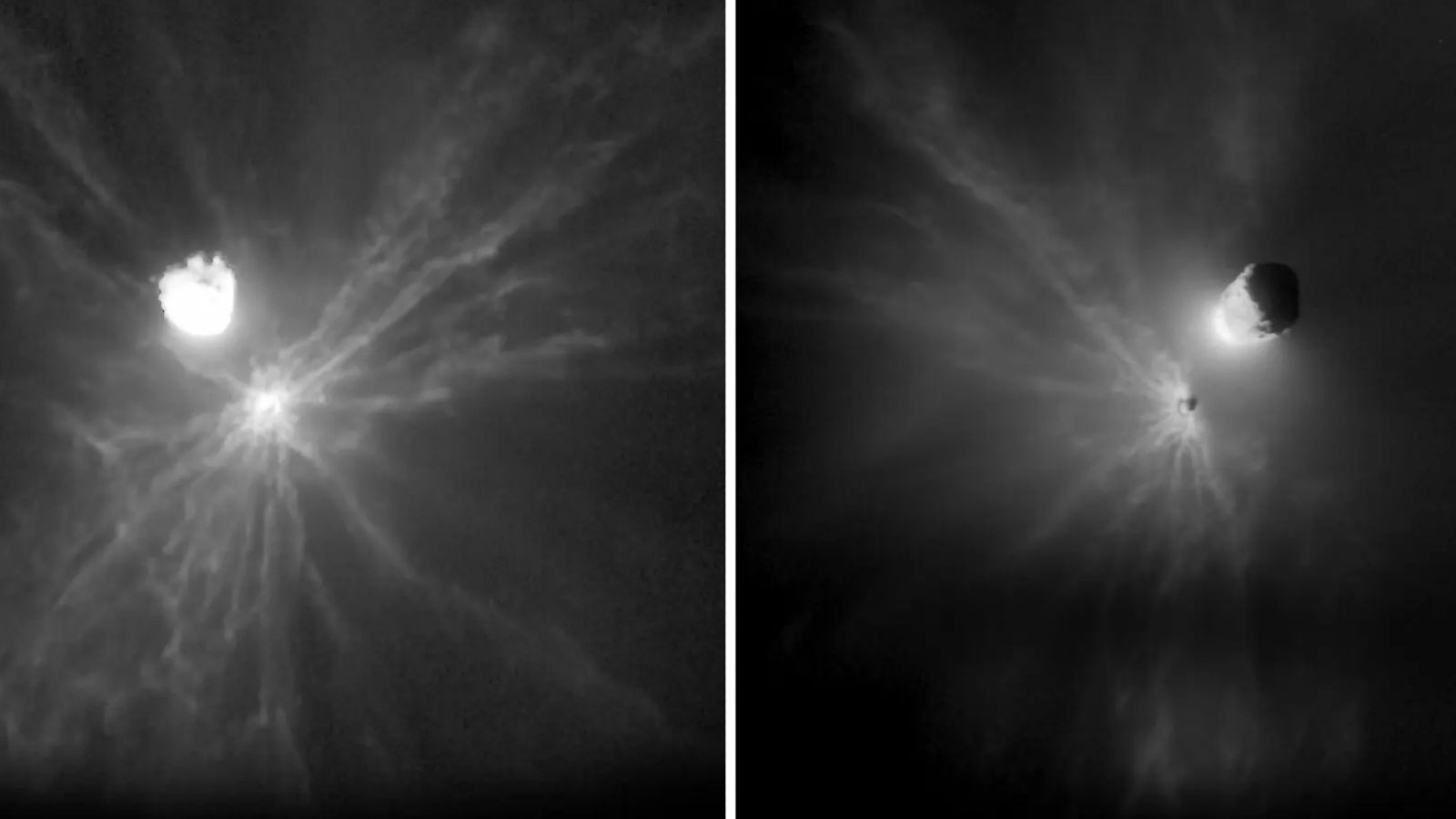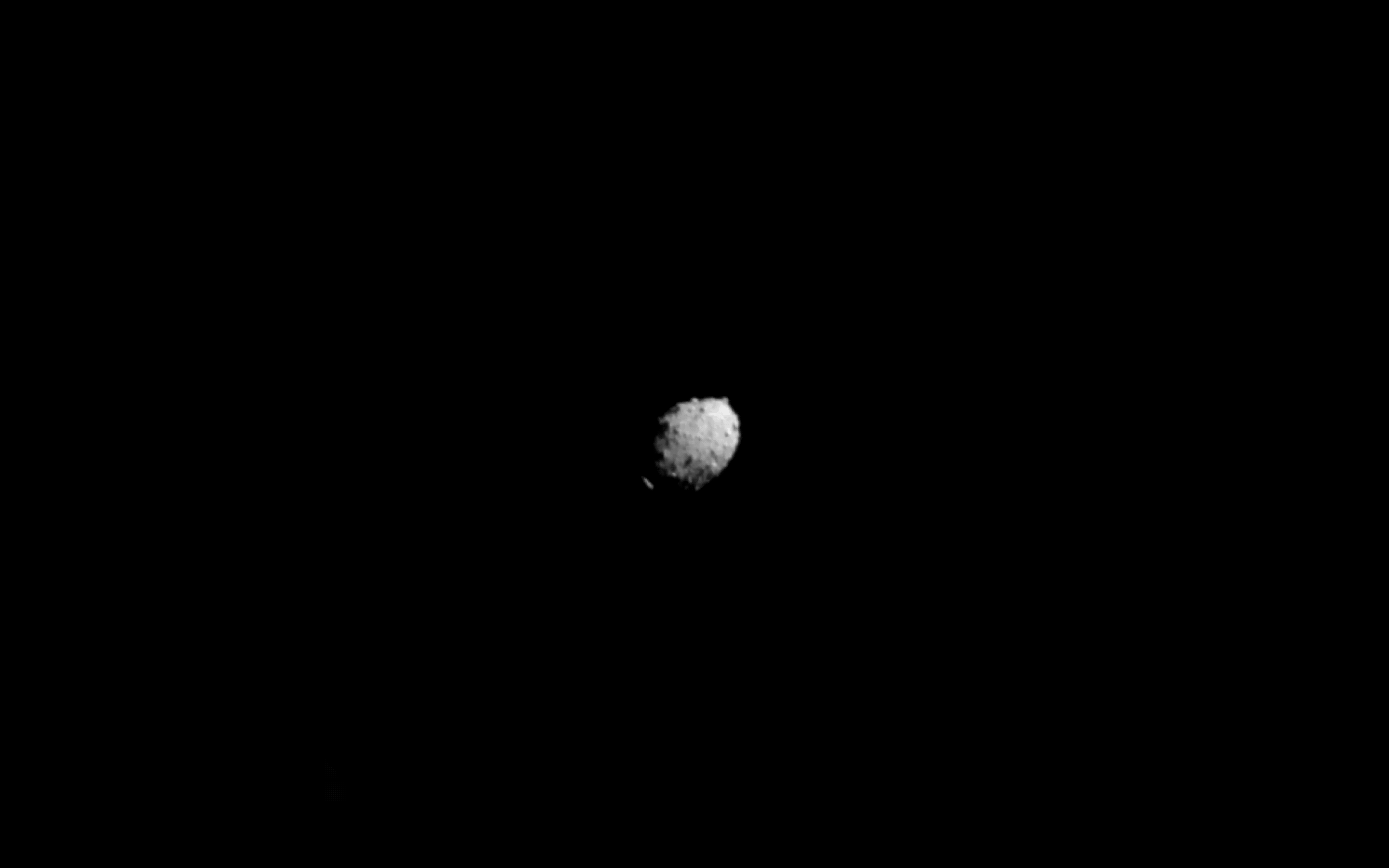☄️ Scientists don't understand the trajectory of asteroid Dimorphos fragments
Follow us on Google News (click on ☆)
Images captured by the LICIACube satellite revealed debris ejected with surprising energy. These observations challenge the physical models used to predict asteroid behavior after an impact.

The debris field after DART's collision with Dimorphos, captured by LICIACube. Analyses reveal unexpected behaviors.
Credit: NASA DART team and LICIACube
The DART mission not only shortened Dimorphos' orbit around Didymos but also changed its shape. These results were considered proof of concept for the kinetic impactor method.
However, the study of debris shows that large fragments are moving faster than expected. The ejected fragments could even pose a risk to Mars in several millennia. Their arrangement in distinct groups reveals physical phenomena that are still poorly understood.
Scientists attribute this to an 'additional impulse' received during their ejection. This extra energy could come from the release of trapped gas within the asteroid. Another hypothesis suggests resonance effects during fragmentation.
The clustered arrangement of debris remains a mystery. It could be linked to variations in Dimorphos' composition or internal structure.

DART's final images before impact with Dimorphos.
Credit: John Hopkins University Applied Physics Laboratory
What is the kinetic impactor method?
The kinetic impactor method involves sending a spacecraft to collide with an asteroid to alter its trajectory. This technique relies on momentum transfer during the collision.
The effectiveness of this method depends on several factors, including the mass and speed of the impactor. The latest observations show that other parameters, such as the asteroid's structure, play a crucial role.
Future missions will need to account for these variables to optimize impacts. Current simulations still don't capture the full complexity of the phenomena at play.